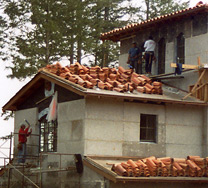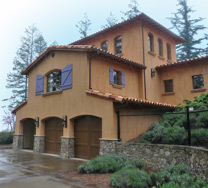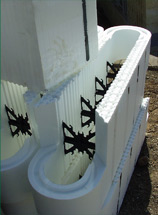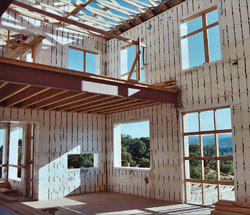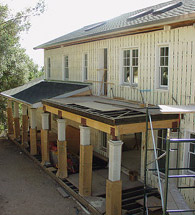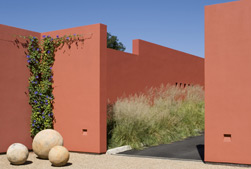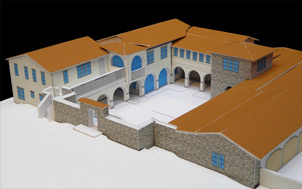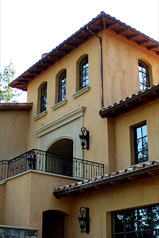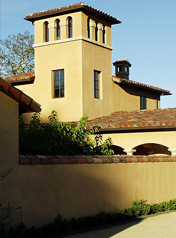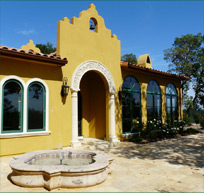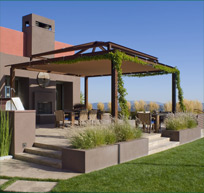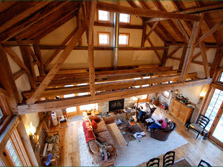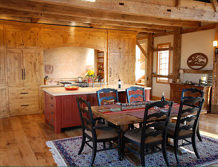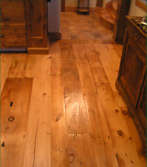What is sustainable building?
In a few words, careful and responsible use of the earth’s limited resources. It means using as little energy as possible, and if possible generating power on the site – with photo-voltaic panels or geothermal heat pumps; using water wisely, perhaps collecting rainwater or using gray water; sometimes heating domestic hot water or pool water from the sun; using recycled materials where this is practical, and materials manufactured close to the site rather than shipping them great distances; and understanding that direct and indirect consumption can be wasteful. In building, it also means a design and construction method that result in a long lived building that requires little maintenance, and is flexible and interesting enough to satisfy many families over time.
Harrison Woodfield Architects introduces a whole range of sustainable systems to our clients, who can then review what is available in design and technology and decide how much they want to incorporate into their project. Sara is uniquely qualified for this as her first degree was a Bachelors of Science in Environmental Biology, and she has continued to keep involved in the sustainable design field, attending many national conferences, and is Certified by California’s Build it Green program, and a member of the US Green Building Council.
A few examples of our work:
Solid wall construction
Built with Rastra Block, this home has thick reinforced concrete walls, within recycled styrofoam and concrete forms. The saving in lumber and drywall is dramatic. Earthquake and fire-resistance are greatly increased. Sound and thermal qualities are much improved. Susceptibility to damp and mold are much reduced. Insect and vermin infestation within the walls is nearly eliminated. Used styrofoam is recycled instead of ending up in landfills.Most important for me though, the building will dramatically outlast a wood frame building, be much more comfortable to live in, and less expensive to heat, cool and maintain.
Click the image for enlarged view
Another solid wall system, this Insulated Concrete Form has most of the advantages described above, but the wall material is made of new polystyrene blocks, 16” x 34”, filled with rebar and concrete. The system is designed to be easy to install and contractor friendly, with conventional exterior materials and interior materials covering the wall system.
Another building where we used Insulated Concrete Forms for the large home, garage and numerous site walls. In addition to the block, we added photo-voltaic panels and thermal panels to heat the pool. Good siting to take advantage of the winter sun and reduce the exposure to the hot east and west summer sun, along with sunshades and trellises on the west elevation, and the ICF walls, make this home very comfortable and inexpensive to heat and cool.
Construction is about to start on this Carmel Valley home. It is designed with a different solid wall product – a styrofoam core with concrete applied to the inside and outside of the panel. Finish materials go directly on the concrete, without drywall or exterior lath. This project has all the advantages of the solid wall methods discussed above: great energy conservation, durable, lovely sound quality, virtually impenetrable to fire, animals and decay. This will also be a Net Zero home, where we reduce the power needs and all the power required is generated on the site, so, on an annual basis the owners need not buy power from the grid. We are collecting rainwater for domestic and landscape uses, and are using gray-water for some irrigation needs.
Venting
Heat rises. Designing a natural collection area such as a small tower, will create natural air movement in hot summers by venting hot stale air and drawing in fresh air. Air conditioning becomes natural, instead of forced, sharply reducing power consumption. In winter, warm air can be collected and recycled through the HVAC system. We’ve used whole house fans for years, quickly and mechanically venting a home after a hot day and bringing in fresh cooler air.
Orientation
Careful siting is my first job as an architect; this is the most important step and saves the most in terms of energy use and gives the most in terms of comfort, increasing the effectiveness of active and passive solar use. Limited exposure on the east and west sides, and adding shade from manmade structures or tall trees means the building absorbs less of the hot solar energy in the summer. Southern exposures let in limited hot summer sun but the most winter sun for heat and daylight..
